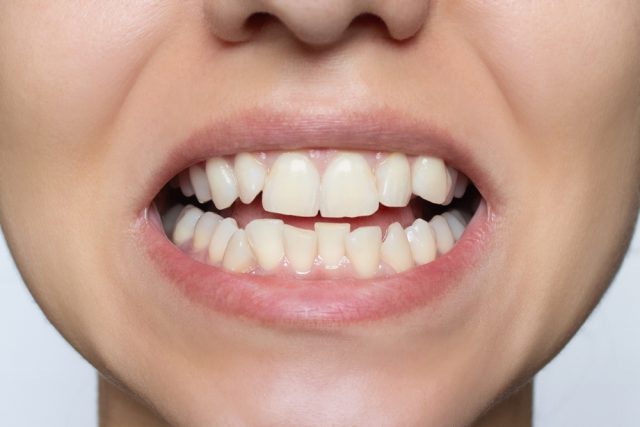
Gum Disease Treatment Near You
Your smile is your signature—it’s one of the first things people notice about you. But what happens when gum disease threatens to steal that confidence? Gum disease, also known as periodontal disease, is a silent yet serious condition that affects millions of people worldwide. Left untreated, it can lead to tooth loss, chronic health issues, and a diminished quality of life. The good news? With the right knowledge, treatments, and preventive measures, you can take control of your oral health and safeguard your smile for years to come.
If you’re experiencing symptoms of gum disease, contact our dentist in Littleton at (720) 719-0012.
About Dr. Tom Bonbright
Dr. Tom Bonbright is a Denver native who brings decades of dental expertise and a passion for patient care to our Littleton practice. After earning his DDS from the University of Colorado School of Dentistry in 1985, Dr. Bonbright built a successful practice that he operated until 2020, before moving on to working with Dr. Michael Hoagburg. As an Associate Fellow of the American Academy of Implant Dentistry and graduate of advanced training programs at the Pankey Institute and Spear Dental Academy, he combines cutting-edge techniques with personalized patient communication.
When he’s not helping patients achieve beautiful, long-lasting smiles, Dr. Bonbright enjoys exploring Colorado’s outdoors with his wife, Karen, and their children and grandchildren. An avid fly fisherman and hiker who has climbed many of Colorado’s “Fourteeners,” he appreciates the active lifestyle that draws so many people to our area. His commitment to connecting with patients from all backgrounds and multi-generational families reflects his genuine love for both dentistry and community.
What Is Gum Disease?
Gum disease is an infection of the tissues that support your teeth, primarily caused by bacterial plaque buildup. It ranges from mild inflammation (gingivitis) to severe conditions (periodontitis) that can damage gums, bones, and ligaments. If ignored, gum disease can progress, leading to tooth loss and even impacting your overall health, with links to heart disease, diabetes, and respiratory issues.
Gum disease is alarmingly common. According to the Centers for Disease Control and Prevention (CDC), nearly 50% of adults over 30 in the United States have some form of periodontal disease. The prevalence increases with age, but it’s not just an “older person’s problem”—anyone can develop gum disease if oral hygiene is neglected.
Don’t let these statistics scare you. Understanding gum disease is the first step to preventing and treating it.
Stages of Gum Disease
Gingivitis
Gingivitis is the earliest and mildest form of gum disease. It’s caused by plaque—a sticky film of bacteria that forms on teeth daily. When plaque isn’t removed through brushing and flossing, it irritates the gums, leading to inflammation.
Symptoms of Gingivitis:
- Red, tender, or swollen gums
- Bleeding during brushing or flossing
- Persistent bad breath (halitosis)
- A change in gum color from healthy pink to red or purple
Periodontitis
If gingivitis is left untreated, it can advance to periodontitis, a more severe condition where the infection spreads below the gumline. This damages the supporting bone and connective tissues, creating pockets where bacteria thrive.
Symptoms of Periodontitis:
- Receding gums, making teeth appear longer
- Deep pockets between teeth and gums
- Shifting or loose teeth
- Persistent bad breath or a bad taste
- Pain when chewing
- Pus between teeth and gums
Advanced Periodontitis
In its most severe stage, advanced periodontitis can lead to significant bone loss, tooth mobility, and tooth loss. It may also contribute to systemic health issues, such as cardiovascular disease, diabetes complications, and pregnancy risks. Immediate professional care is essential to manage this stage.
Gum Disease Symptoms
Gum disease can be sneaky, with symptoms that are easy to overlook in the early stages. Pay attention to these symptoms of gum disease:
- Gums that bleed easily during brushing or flossing
- Swollen, red, or tender gums
- Persistent bad breath or a metallic taste
- Receding gums or teeth that appear longer
- Loose, shifting, or sensitive teeth
- Changes in your bite or how your teeth fit together
- Pain or discomfort when chewing
If you’re dealing with any of the symptoms above, contact our dental office in Littleton at (720) 719-0012.
Treatment Options for Gum Disease
Non-Surgical Treatments
For earlier stages of gum disease, there are various nonsurgical treatment options our dentist near you may recommend:
- Scaling and Root Planing: This deep-cleaning procedure smooths tooth roots to remove bacteria and promote gum reattachment. It’s highly effective for gingivitis and early periodontitis.
- Antibiotics: Topical or oral antibiotics (e.g., doxycycline) control bacterial infections. Gels, chips, or mouth rinses may be prescribed.
- Laser Therapy: Lasers target and remove infected tissue with minimal discomfort, speeding up healing.
Surgical Treatments (for Advanced Cases)
For severe gum disease, we may recommend surgical procedures:
- Flap Surgery (Pocket Reduction): Gums are lifted to remove tartar and reduce pocket depth, then stitched back to fit snugly around teeth.
- Bone Grafts: Synthetic or natural bone replaces lost bone to stabilize teeth.
- Soft Tissue Grafts: Tissue from another part of the mouth covers exposed roots caused by gum recession.
- Guided Tissue Regeneration: A mesh-like material encourages bone and tissue regrowth while blocking unwanted tissue.
- Bone Surgery: Reshapes or smooths damaged bone to reduce bacterial hiding spots.
Gum Disease Risk Factors
Some may be more prone to developing gum disease, such as those with:
- Smoking or Tobacco Use: Tobacco weakens the immune system and impairs gum healing, making smokers twice as likely to develop gum disease.
- Certain Genetics: A family history of gum disease increases your risk, even with good oral hygiene.
- Hormonal Changes: Pregnancy, menopause, or puberty can make gums more sensitive to inflammation.
- Medications: Certain drugs (e.g., anticonvulsants, calcium channel blockers) cause gum overgrowth or reduce saliva production, increasing susceptibility.
- Chronic Disease: Diabetes, heart disease, and autoimmune conditions like lupus weaken the body’s ability to fight gum infections.
- Poor Nutrition: Diets low in vitamin C or high in sugar promote bacterial growth and weaken gums.
- Stress: Chronic stress impairs immune function, making it harder to combat gum infections.
- Misaligned Teeth or Dental Appliances: Crooked teeth or ill-fitting dentures can trap plaque, increasing the risk.
Treat gum disease at Littleton Advanced Dentistry! Contact our Littleton dentist at (720) 719-0012.
Cost of Gum Disease Treatment
The cost of treating gum disease varies based on the disease’s stage, treatment type, geographic location, and insurance coverage, typically ranging from $75 to $12,000 for procedures like professional cleanings for early gingivitis, scaling and root planing for mild periodontitis, or advanced treatments like laser therapy (LANAP), gum grafts, bone grafts, or flap surgery for severe cases.
Frequently Asked Questions
Gingivitis is reversible with proper care. However, periodontitis is manageable but not curable, requiring ongoing maintenance for life.
Yes, gum disease can be prevented by practicing good oral hygiene habits, such as brushing and flossing daily, using fluoride toothpaste, and visiting your dentist regularly for professional cleanings and checkups.
No, periodontal disease is not contagious. However, bacteria that cause gum disease can be spread through saliva, so it’s important to practice good oral hygiene habits to prevent the spread of bacteria and gum infection.
